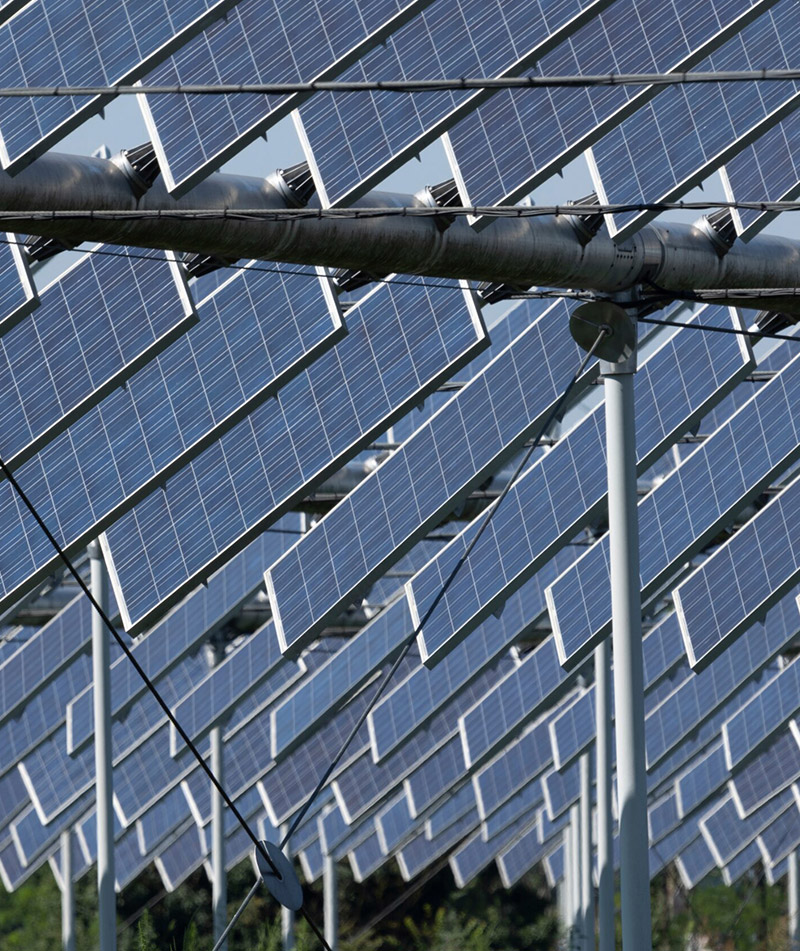Agrivoltaics
What is it?
- It is a new solution for PV installation,
- in addition to crops and grazing for livestock, you can also get electricity from your field,
- minimal reduction of the usable agricultural area (less than 1%),
- no negative impact on the quality of agricultural land,
- installation of bifacial (double-sided) PV panels,
- design adapted for vertical installation,
- PV panels are installed vertically and oriented east and west.
Since both surfaces of the module can generate electricity and are oriented to the south, east and west, compared to conventional installations, the so-called “duck curves” are balanced.
This means that power is generated mainly in the morning and evening hours. All areas between the rows of installed modules can still be fully utilised. According to the “Solar Energy and Storage 2019” conference, up to 39 gigawatts of PV panel capacity can be installed on agricultural land in the Czech Republic.
The installation of bifacial panels (active on both sides), which are significantly more resistant to UV degradation, takes place on vertical structures anchored into the ground. The distance between the rows of panels is considered to be between eight and twelve metres but depending on the possibilities and requirements, this distance can be up to 15 metres.
It is therefore easy to manipulate between rows with almost any agricultural equipment. The standard design height considered is around five metres, thus providing partial shade under the installed panels. This provides a definite advantage during heat waves and frequent dry summer days. Vertical structures are also a common form of installation, which not only serve as a source of electricity but can also serve as a fence or corral for farm animals.
Due to the orientation of the panels to the east and west and depending on the type of module used, there is an average of 5 to 10% higher specific electricity yields per kW. The system therefore benefits not only from the installed capacity but also from market prices, which are normally higher in the morning and evening hours. According to forecasts, the agrivoltaic sector and the total amount of installed bifacial panels is estimated to increase by up to 1000% by 2024. Information from 2018 indicates that the total installed capacity of “bifacials” was only 5.4 gigawatts. It is estimated that in 2024, this capacity will be almost 4 times higher and their total capacity will be around 21 gigawatts.
This would represent almost 17% of the entire PV market.
In the Czech Republic, not much is yet known about the benefits of this new bifacial panel technology. Unlike in the Czech Republic, this segment has already grown significantly in Germany and Austria, where installations of several tens of megawatts are being built. Projects related to agrovoltaics in the Czech Republic should be supported by the state with new subsidies under the Energy Fund.




